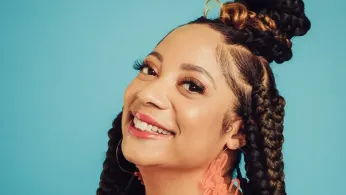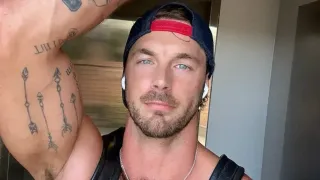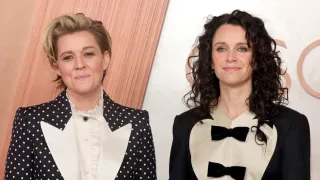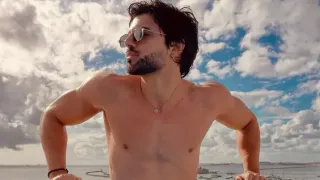
4 hours ago
Ashley Ray on Queer TV, TikTok, and Navigating Identity
READ TIME: 4 MIN.
Ashley Ray has emerged as a leading commentator on television and pop culture, known for their incisive humor and deep knowledge of LGBTQ+ media history. In a recent interview with Queerty, Ray delved into the transformative role of queer TV, the complexities of online spaces like TikTok, and the ongoing fight against exclusionary ideologies within the LGBTQ+ movement. Their insights provide a nuanced understanding of how entertainment and digital platforms continue to define, challenge, and empower queer identities across generations .
Ray’s career has been shaped by a lifelong engagement with television, both as a viewer and as a critic. They highlighted how shows like"The L Word" became a touchstone for many queer people coming of age in the early 2000s, offering a rare glimpse into lesbian lives and relationships on mainstream television. Ray noted the importance of seeing themselves reflected on screen, describing “The L Word” as “a show that, for better or worse, made queer women feel seen—even when it got things wrong.” The series’ flaws were as much a part of its legacy as its triumphs, sparking conversations about representation, stereotypes, and the complexity of queer experience .
More recently, Ray pointed to reality formats like Netflix’s"The Ultimatum: Queer Love" as indicative of a new era, where the diversity and messiness of queer relationships are given space to unfold without the constraints of network standards. “Reality TV can be chaotic, but it’s also unfiltered in a way that scripted shows aren’t. We get to see queer people making mistakes, falling in love, and just existing,” Ray told Queerty . This shift reflects broader changes in media, with streaming platforms and social networks allowing for more authentic and varied storytelling.
Ray’s engagement with TikTok has made them a prominent figure in the digital queer community. The platform’s algorithm-driven nature has enabled marginalized voices to reach large audiences, but Ray also warned about the risks of virality and backlash. “TikTok is a place where queer joy can go viral, but so can hate,” Ray explained, referencing the speed with which misinformation and exclusionary rhetoric can spread .
The interviewer and Ray discussed how TikTok’s user base skews younger and more progressive, often leading to rapid shifts in language and self-identification. Ray observed that the platform has become a space for both education and conflict, as users debate the meaning of terms like “queer,” “nonbinary,” and “transgender.” According to Ray, these debates—while sometimes fraught—are part of the necessary evolution of LGBTQ+ discourse. “It’s messy, but it’s important. We’re figuring out how to talk about ourselves, and sometimes that means clashing over definitions or boundaries,” Ray said .
Other sources corroborate TikTok’s influence on queer identity formation. The Pew Research Center found that social media platforms are now central to how LGBTQ+ youth discover information, connect with peers, and shape their sense of self . Meanwhile, The Trevor Project reports that online communities provide crucial support for LGBTQ+ youth, particularly those in conservative or unsupportive environments .
A significant portion of the interview focused on the threat posed by trans-exclusionary radical feminists (TERFs), whose rhetoric undermines transgender people’s rights and safety. Ray was candid about the persistence of TERF ideology, both online and offline. “TERFs want to draw a line between who gets to be ‘real’ and who doesn’t. That kind of gatekeeping is dangerous,” Ray said, emphasizing the need for solidarity across the LGBTQ+ spectrum .
Ray identified education and visibility as key tools in countering exclusionary narratives. They advocated for amplifying transgender voices and histories, drawing attention to the work of activists who have fought for inclusion and recognition. “If you look at the history of our movement, transgender people have always been at the forefront. You can’t erase them from the story,” Ray argued .
Academic research supports Ray’s perspective, with studies showing that anti-trans rhetoric contributes to increased mental health risks and social isolation for transgender individuals . Organizations such as GLAAD have called for media outlets to adopt inclusive language and challenge misinformation, noting that visibility can reduce stigma and foster acceptance .
Throughout the conversation, Ray returned to the idea that pop culture—especially television—plays a crucial role in shaping how queer people see themselves and are seen by others. “The shows we watch help define us,” Ray reflected, citing everything from classic sitcoms to contemporary drama series. They argued that representation matters not just at the level of casting, but in the complexity and humanity given to LGBTQ+ characters .
Ray’s own podcast and commentary work—including “TV, I Say with Ashley Ray” (YouTube: TV I Say with Ashley Ray)—illustrate an ongoing commitment to analyzing media through a queer lens . By fostering conversations about representation, storytelling, and cultural change, Ray encourages audiences to think critically about what they watch and how it influences their understanding of identity.
Ashley Ray’s interview with Queerty provides a snapshot of a moment in queer media history, marked by both progress and ongoing challenges. As TV and social media continue to evolve, Ray’s focus on inclusion, solidarity, and storytelling offers a hopeful vision for the future—one in which all LGBTQ+ identities are seen, respected, and celebrated.






